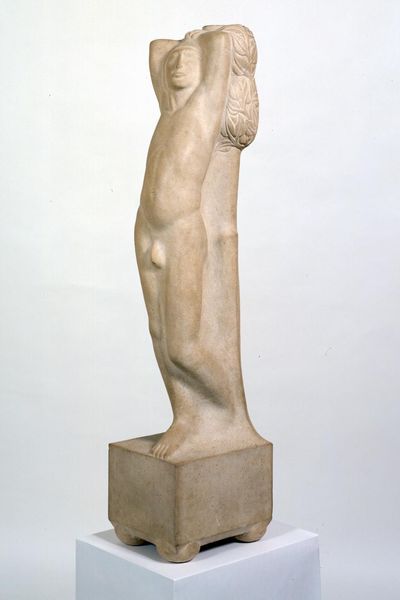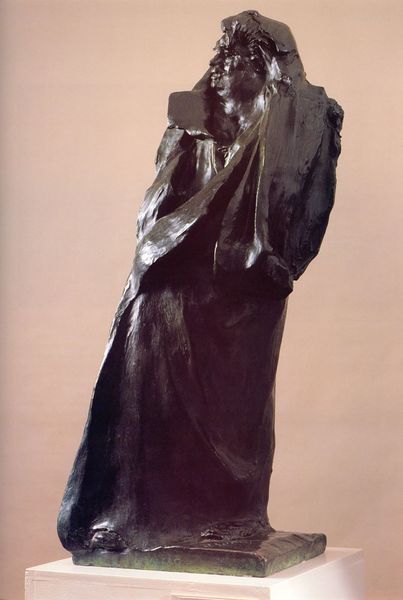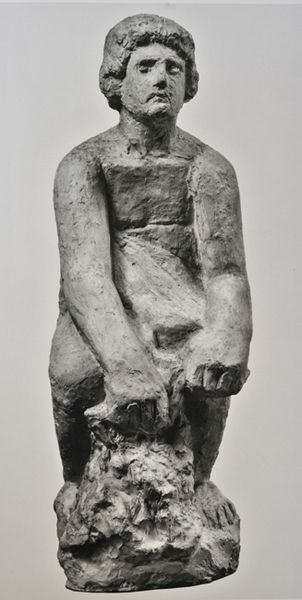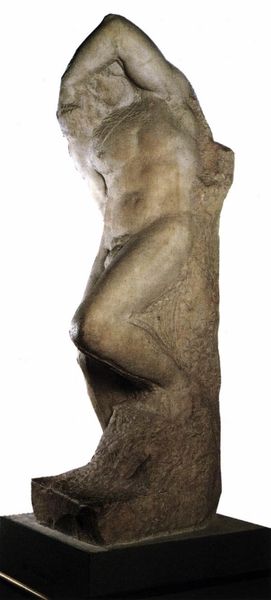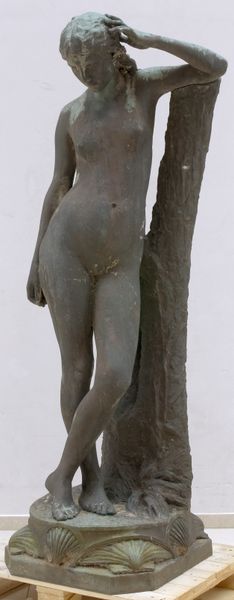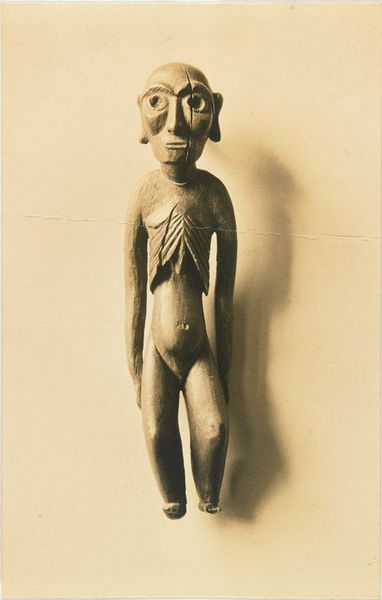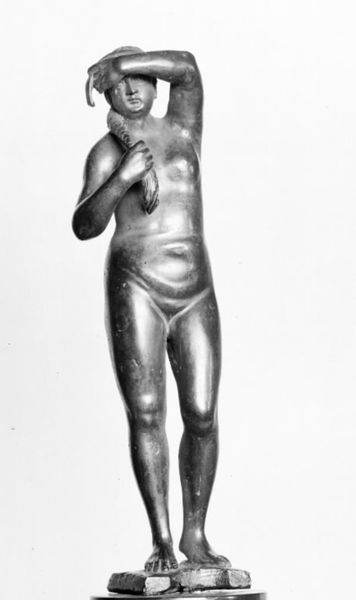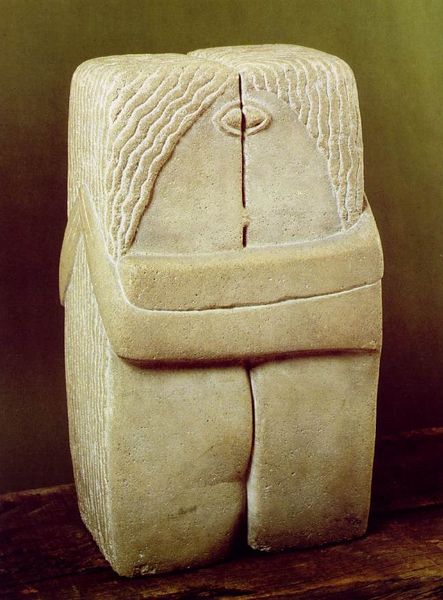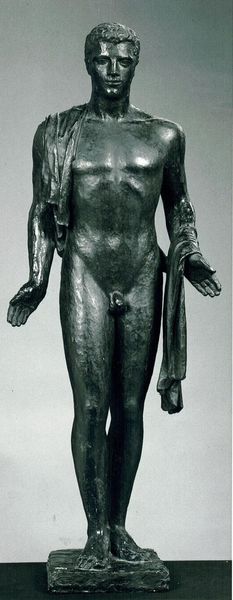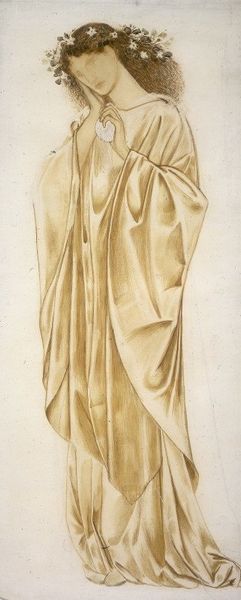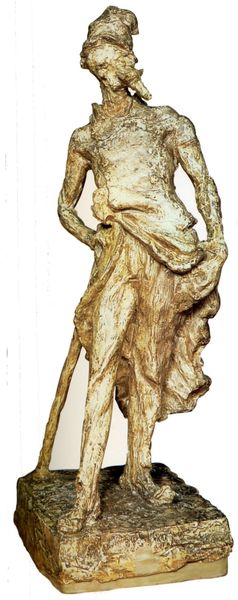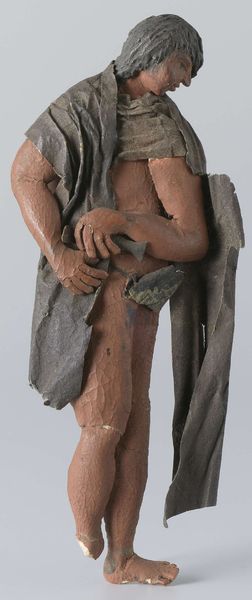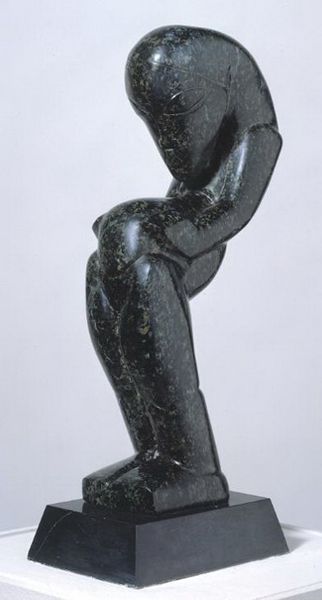
sculpture, wood
#
portrait
#
sculpture
#
figuration
#
sculpture
#
abstraction
#
wood
#
italian-renaissance
Copyright: Public domain
Editor: This is Modigliani’s “Head,” created in 1912. It’s a sculpture, carved from wood, and the elongated face and closed eyes give it such a serene, almost haunting quality. What's your interpretation of it? Curator: Well, placing this within its historical context is key. Early 20th-century Paris was a hotbed of artistic experimentation. How do you think this sculpture, in its departure from traditional representation, participated in the broader dialogue about the function of art and the artist’s role in society? Editor: I see what you mean. There's almost a primal quality to it. But how did Modigliani's exploration of non-Western art impact the contemporary perception of "primitive" art and its place within the Western art canon? Curator: Exactly! This sculpture engages with those debates. Did it serve to further exoticize non-Western cultures, or did it foster a genuine appreciation for their aesthetic principles? Where do we see echoes of those "primitive" qualities, as then understood? Editor: Perhaps in the simplified forms, or the mask-like quality of the face? It makes you consider who got to define 'art' back then. How might the sculpture's original exhibition, its placement within specific galleries and collections, have shaped its reception and influenced the narrative surrounding it? Curator: Think of the power of institutions to legitimize certain forms of artistic expression while marginalizing others. Considering the political climate of the time, and the rise of nationalism, do you see this sculpture as engaging with or resisting those forces? Editor: I hadn't considered its political dimension. It makes you wonder if Modigliani aimed to create something timeless, outside of all the political squabbles. I suppose you can't really escape it, though. Curator: That’s right. It also opens to questions about which artists get remembered and the role of power in shaping taste, particularly in the modern era. It’s all part of the ongoing dialogue between art and its audiences. Editor: So, thinking about that dialogue makes the piece feel much more contemporary now. Thanks!
Comments
No comments
Be the first to comment and join the conversation on the ultimate creative platform.
